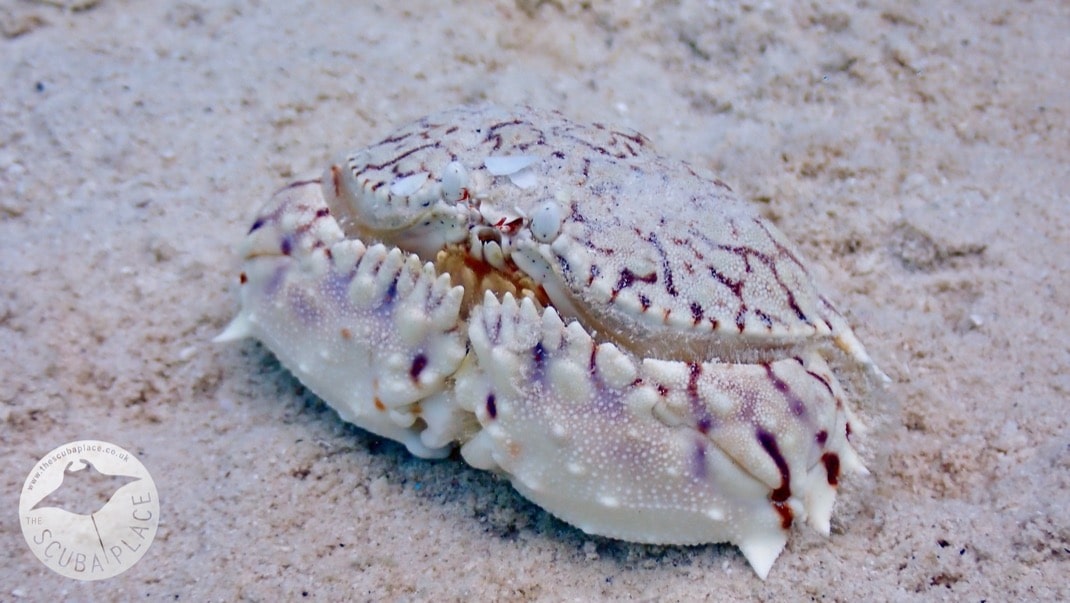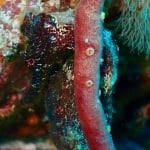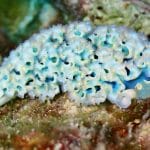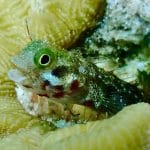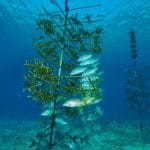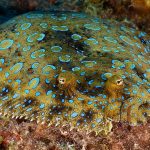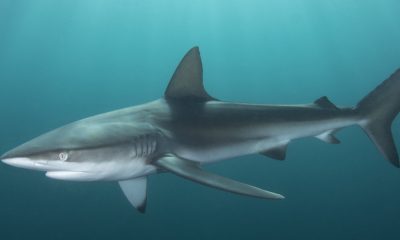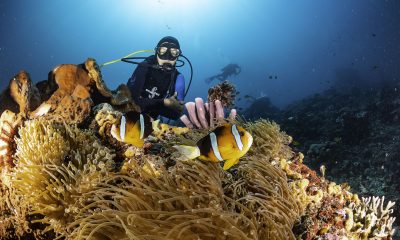News
The Scuba Genies head to Bonaire! Part 2 of 2
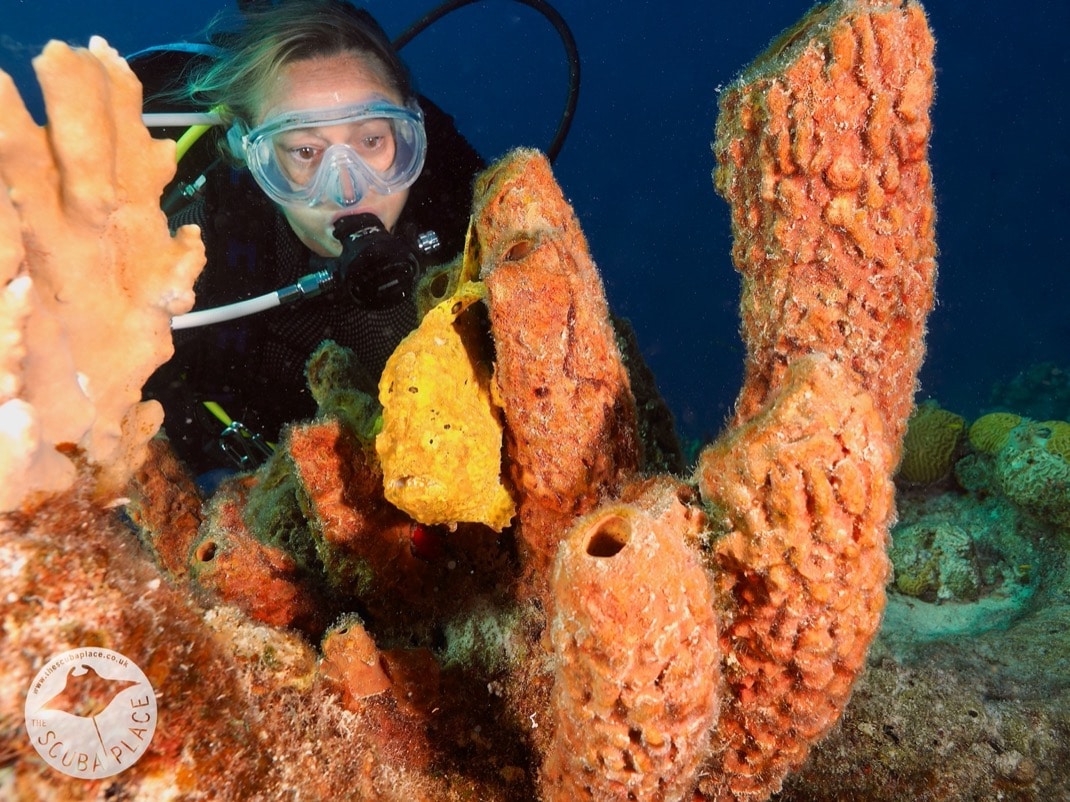
In the second of this two-part blog, The Scuba Genies share their trip report from the Come Dive with Us hosted trip to Bonaire in September 2021. Missed Part One? Read it here!
There is another dive we just must share with you and one that we can confidently call a ‘Dive of a Lifetime’. There were 12 of us in our group, and collectively we have logged in excess of 8000 dives in some very special places around the world. And every one of us was totally blown away by this dive! A fellow diver, by way of the Girls that Scuba FB group mentioned that if the timing was right, an ostracod dive was one not to miss. A link to an online article noted that 2 to 5 days after a full moon and 45 minutes after sunset, was the best time to observe the mating ritual of these tiny creatures. And only if they have not been exposed to light of any kind. That meant no streetlights and no torches. NO TORCHES!
We lucked out and were in Bonaire during a full moon and planned our Ostracod dive carefully. One the fifth night after the full moon we headed south to Red Beryl, a site we had previously been to and knew the terrain. We were in awe of the soft coral forest at the site, and this was the perfect environment for the ostracods. As the ‘show’ only lasts about 20 minutes, we entered the water while it was still light and left a beacon on the shore to help guide us after the dive. We gently finned out over the sand and hovered above the soft coral at around 8 metres as the dark crept in. Little sparks of light started to appear in ones and twos, and then just as we had hoped, chains of these tiny creature were all around us, in hundreds and then thousands! Everywhere you looked, the ostracods were rising to the surface, like underwater fireflies linked together flashing their bioluminescence one after the other, giving us nature’s most amazing firework show! The only way I can explain it is seeing thousands of Tinkerbells all at once! 20 minutes later, it was all over so we turned on our torches and headed slowly back to the shallows, happy to find a sleeping turtle, scorpion fish, more octopus and lots of little creatures.
As our holiday inevitably came to an end, we chose a site within minutes of Buddy’s called The Invisibles. A highly recommended dive site, we parked up alongside the beach, kitted up and walked down the rock beach and into the water. 95 minutes later, we walked back up the beach with memories of green turtles feeding, free-swimming moray, immense sponges and a plethora of anemones with their tenant critters – shrimp, crabs, and all things fascinating. And back in the sandy shallows we didn’t know where to look! A golden spotted snake eel, juvenile angel fish and a box crab that scuttled across the seabed before vanishing into the sand in a finger-click.
In summary, the diving here was very special – it truly lives up to its reputation of being one of the best destinations to visit, and in fact, over-delivered when it came to our expectations from the Caribbean. To mix it up, in addition to shore diving we also scheduled 4 days of boat diving right from the dock at Buddy’s. We were able to explore all around Klein Bonaire and reach some of the more difficult shore-entry sites including Karpata and 1,000 Steps. We would recommend this highly if only to get away from a daily dose of sand in your boots!
Buddy’s is a full-service dive operation, offering quality accommodation, good food, and the dive centre is as slick an operation as we have ever seen or experienced. The drive-thru tank station is genius for shore diving, the house reef is easily accessed, and the boat diving from the dock on one of their 5 purpose-built dive boats is organised perfectly. Catering for newbies all the way through to technical and rebreather divers, Buddy’s delivers it all, and very well. The staff are fun, highly professional, and the whole set-up is geared to making a dive trip work without any fuss. Even the shop is very well stocked with kit, spares, forgotten stuff and replacements for broken things!
Importantly, Buddy’s is also a supporter and enforcer of the Marine Park protection rules – the whole of the island is surrounded by a protected marine reserve, so no touching, no gloves, no pointy-sticks. Turtle nesting and coral regeneration programmes are evident, and given the fantastic health of the reefs, the protection initiatives and regulations work.
Would we go back? Without any hesitation, and repeatedly!
Bonaire delivered the goods. Great diving, great accommodation and freedom to dive wherever and whenever you want – especially with the tanks on the house reef available 24/7. A perfect destination for dive clubs and groups as the 3–bedroom apartments really work.
Bonaire is exceptional value for money. There are very few places on this planet where you can dive so much for so little in a great marine environment.
Key Facts:
- Getting there: Flights with KLM to Bonaire depart from any major UK airport via Amsterdam. From London Heathrow it was a 12-hour total flight time. An extra 23kg bag also costs less than £90 return if booked in advance.
- Air temperature: Tropical – average daily temperature throughout the year is 31’, reasonable rainfall (passes quickly) and the sea breezes are most welcome!
- Water temperature: 28-30°C. A 1-3mm full suit is recommended to protect from scratches and stings and to keep the sand out.
- Visa requirement: No tourist visa was required, but under COVID there are protocols in place. See https://www.bonairecrisis.com/en/travel-to-bonaire/ for the current requirements.
- Currency: US Dollar with ATMs easily found, and all major credit cards are accepted.
- Electricity: 120V with American 3- and 2-pin plugs. Our US/UK converters worked without issue
Accommodation: You mention Bonaire and Buddy Dive Resort is the first place people mention. Only 10 minutes from the airport makes for a super simple transfer. Multiple room types, all with kitted out kitchens and air-conditioned bedrooms. Two pools, two restaurants, full-service dive shop and staff always around to answer questions or lend a hand.
Diving: With both world class shore and boat diving available, warm and clear water, abundant marine life, coral and sponges like you’ve never seen, what more could you ask for?
Price Guide: Expect from £1500 per person based on two sharing for 7 nights with bed and breakfast. Unlimited shore and house reef diving, Nitrox and car rental all included. Return flights and transfers also included.
Additional costs:
- STINAPA Marine Park passes: $45 per calendar year. We purchased ours online prior to departure and carried a copy in the vehicle when shore diving.
- Buddy Dive Vehicle Insurance: $19 per day of vehicle rental for one named driver for the duration of your stay. For an extra $5 you can name another driver for a day. This was added to the room bill, and we split the cost with the rest of our apartment.
Our Advice: Stay longer…. 10 days would be the perfect amount of time in our opinion to get the most out of the shore and boat diving. And with numerous flights during the week to choose from, any duration can easily be arranged.
Find out more about the worldwide dive itineraries that The Scuba Place offers at  www.thescubaplace.co.uk.
www.thescubaplace.co.uk.
Gear News
Scubapro Free Octopus Promotion 2024
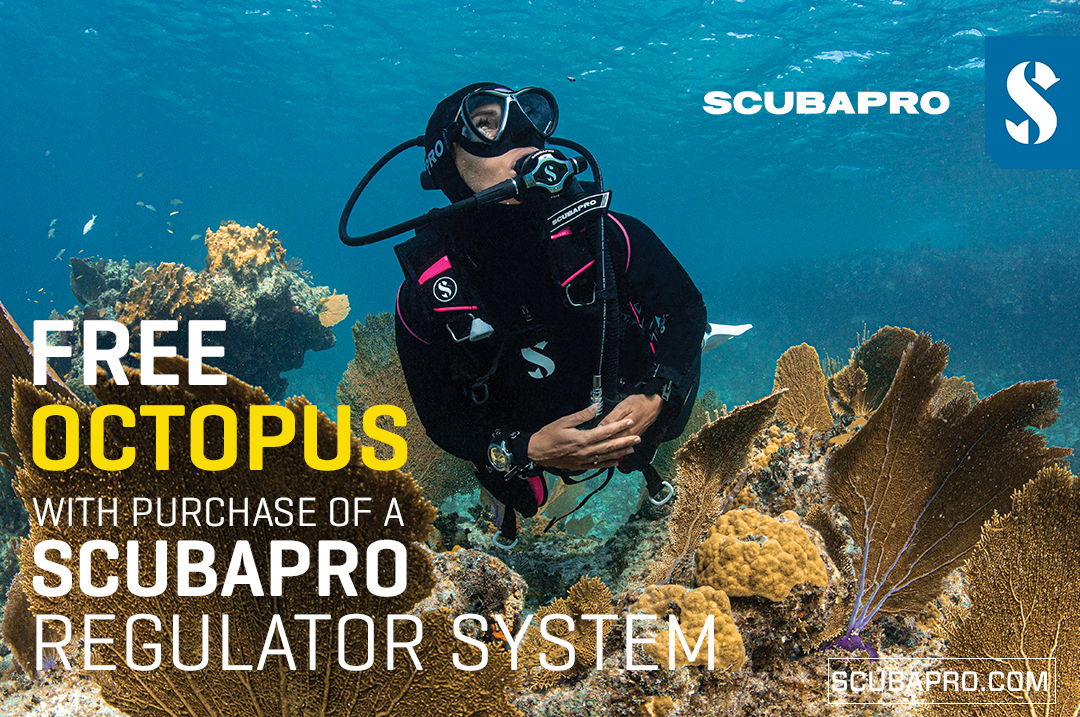
Free Octopus with every purchase of a SCUBAPRO regulator system
Just in time for the spring season, divers can save money with the FREE OCTOPUS SPRING PROMOTION! Until July 31st SCUBAPRO offers an Octopus for free
with every purchase of a regulator system!
Get a free S270 OCTOPUS with purchase of these combinations:
MK25 EVO or MK19 EVO with A700
MK25 EVO or MK19 EVO with S620Ti
MK25 EVO or MK19 EVO with D420
MK25 EVO Din mit S620Ti-X
Get a free R105 OCTOPUS with purchase of the following combinations:
MK25 EVO or MK19 EVO with G260
MK25 EVO or MK17 EVO with S600
SCUBAPRO offers a 30-year first owner warranty on all regulators, with a revision period of two years or 100 dives. All SCUBAPRO regulators are of course certified according to the new European test standard EN250-2014.
Available at participating SCUBAPRO dealers. Promotion may not be available in all regions. Find an authorized SCUBAPRO Dealer at scubapro.com.
More information available on www.scubapro.com.
Blogs
Northern Red Sea Reefs and Wrecks Trip Report, Part 3: The Mighty Thistlegorm

Jake Davies boards Ghazala Explorer for an unforgettable Red Sea diving experience…
Overnight, the wind picked up, making the planned morning dive a bit bumpy on the Zodiacs to the drop point on Thomas Reef. There, we would dive along the reef before descending through the canyon and then passing under the arch before ascending the wall with a gentle drift. The site provided great encounters with more pelagic species, including shoals of large barracuda, tuna, and bigeye trevally.
Once back on the boat, it was time to get everything tied down again as we would head back south. This time, with the wind behind us, heading to Ras Mohammed to dive Jackfish Alley for another great gentle drift wall dive before then heading up the coast towards the Gulf of Suez to moor up at the wreck of the Thistlegorm. This being the highlight wreck dive of the trip and for many onboard, including myself, it was the first time diving this iconic wreck. I had heard so much about the wreck from friends, and globally, this is a must on any diver’s list. Fortunately for us, there was only one other boat at the site, which was a rarity. A great briefing was delivered by Ahmed, who provided a detailed background about the wreck’s history along with all the required safety information as the currents and visibility at the site can be variable.
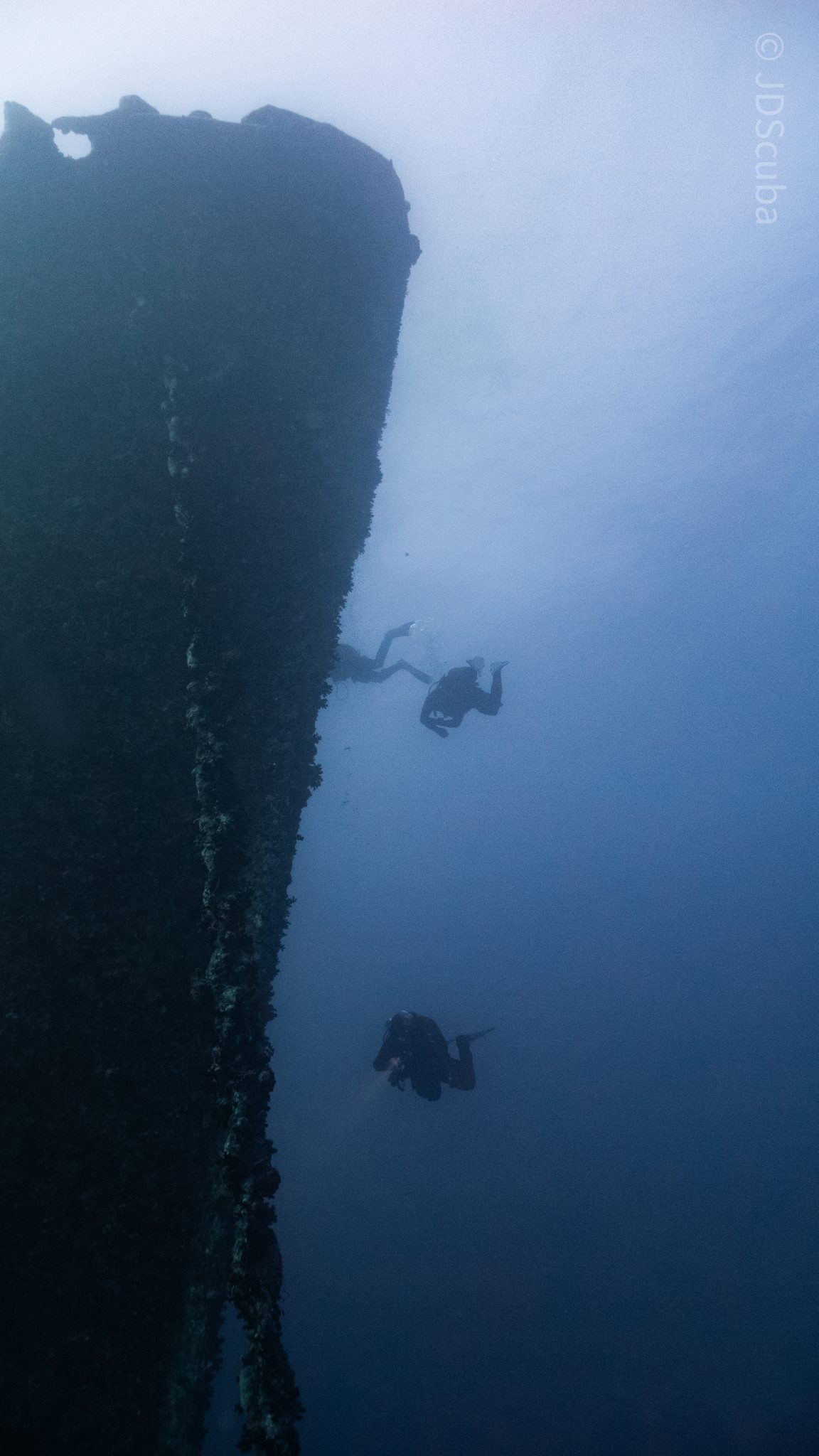
Kitting up, there was a lot of excitement on deck before entering the water and heading down the shoreline. Descending to the wreck, there was a light northerly current which reduced the visibility, making it feel more like the conditions that can be found off the Welsh coast. At 10m from the bottom, the outline of the wreck appeared as we reached the area of the wreck which had been bombed, as our mooring line was attached to part of the propeller shaft. Arriving on deck, instantly everywhere you looked there were many of the supplies which the ship was carrying, including Bren Carrier tanks and projectiles that instantly stood out.
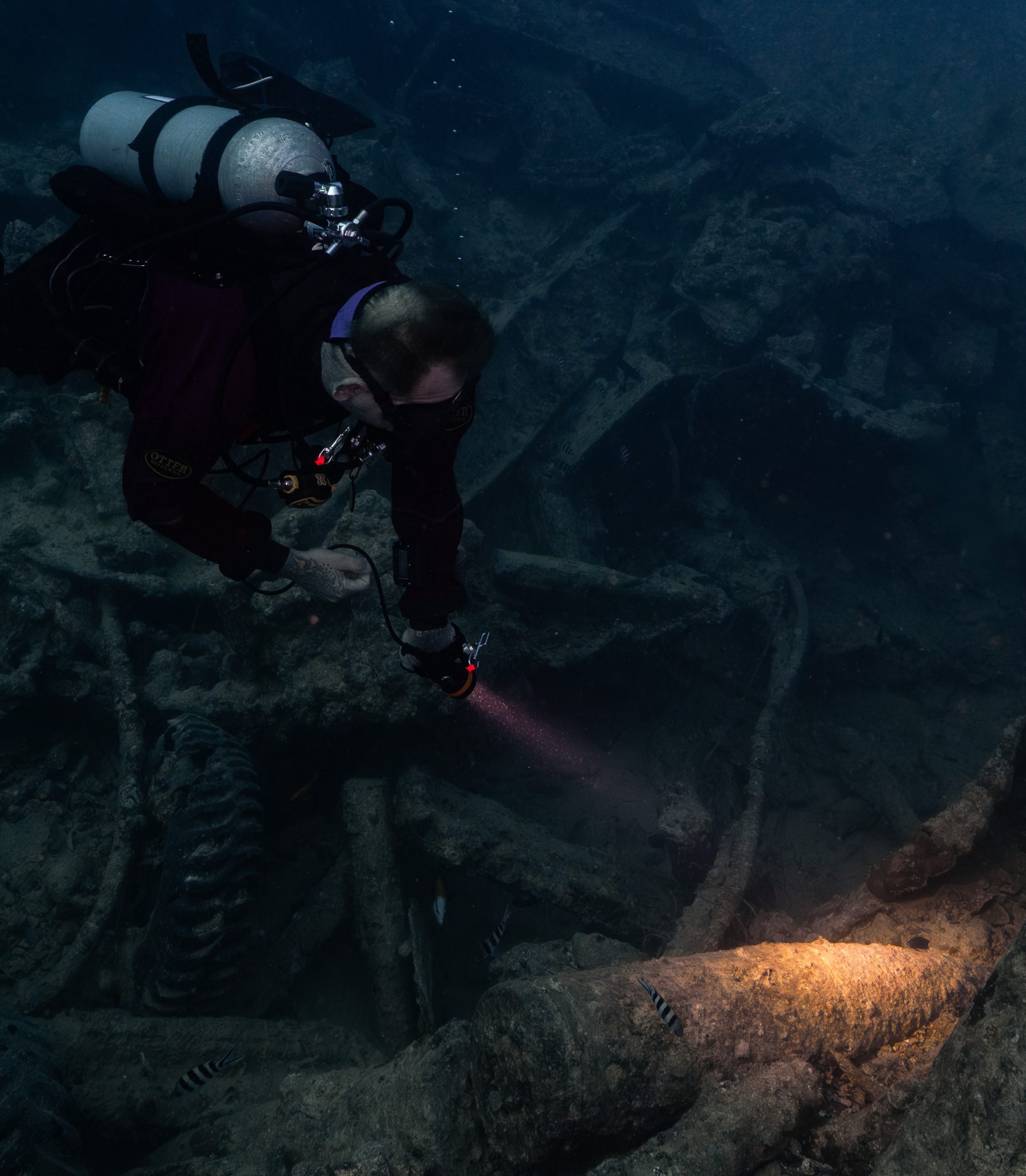
We headed around the exterior, taking a look at the large propeller and guns mounted on deck before entering the wreck on the port side to take a look in the holds. It was incredible to see all the trucks, Norton 16H, and BSA motorcycles still perfectly stacked within, providing a real snapshot in time.
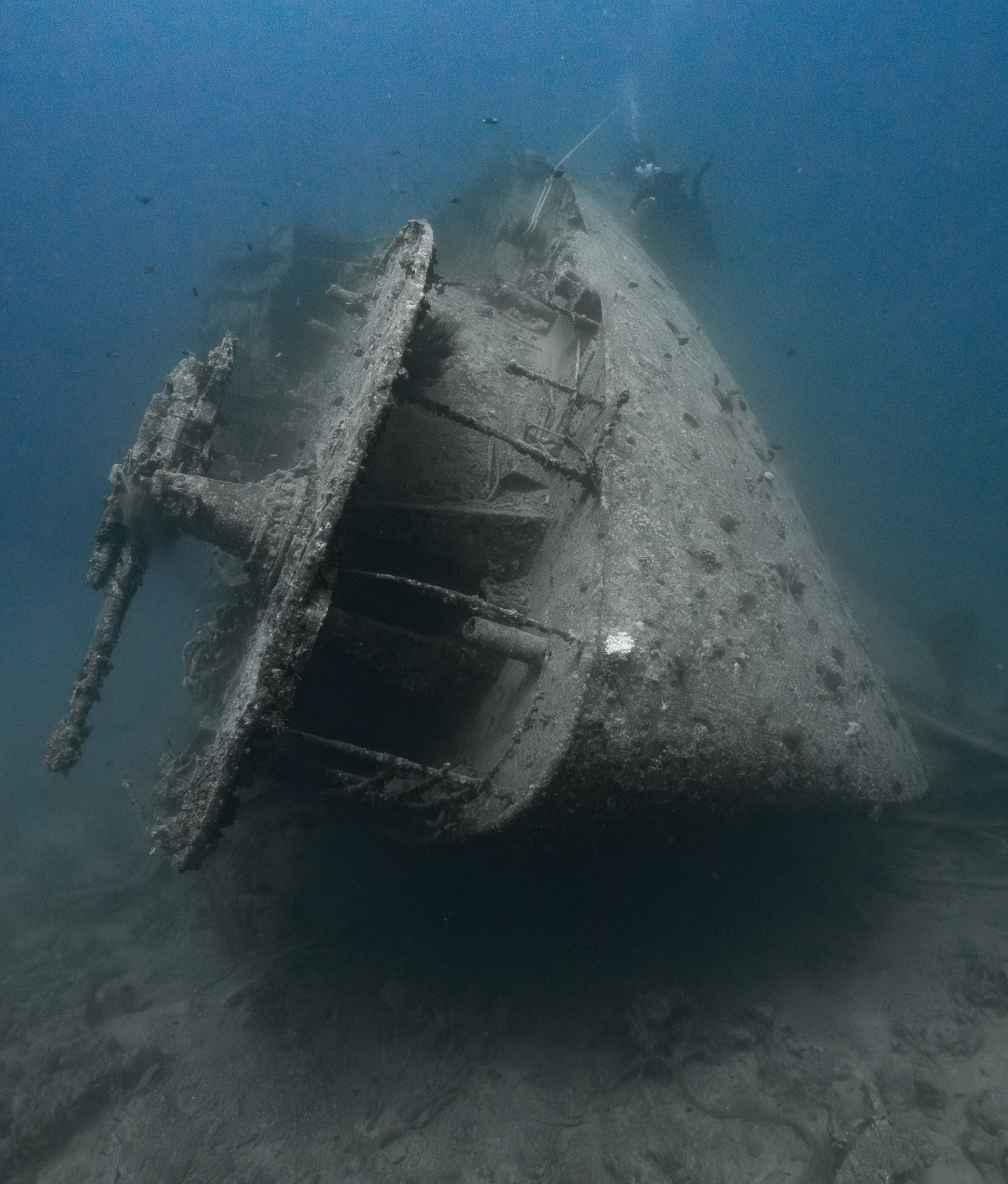
Overall, we had four dives on the Thistlegorm, where for all of the dives we were the only group in the water, and at times, there were just three of us on the whole wreck, which made it even more special, especially knowing that most days the wreck has hundreds of divers. Along with the history of the wreck, there was plenty of marine life on the wreck and around, from big green turtles to batfish, along with shoals of mackerel being hunted by trevally. Some unforgettable dives.

The final leg of the trip saw us cross back over the Suez Canal to the Gobal Islands where we planned to stay the night and do three dives at the Dolphin House for the potential of sharing the dive with dolphins. The site, which included a channel that was teeming with reef fish, especially large numbers of goatfish that swam in large shoals along the edge of the reef. These were nice relaxing dives to end the week. Unfortunately, the dolphins didn’t show up, which was okay as like all marine life they are difficult to predict and you can’t guarantee what’s going to be seen. With the last dive complete, we headed back to port for the final night where it was time to clean all the kit and pack before the departure flight the next day.

The whole week from start to finish on Ghazala Explorer was amazing; the boat had all the facilities you need for a comfortable week aboard. The crew were always there to help throughout the day and the chefs providing top quality food which was required after every dive. The itinerary providing some of the best diving with a nice mixture of wreck and reef dives. I would recommend the trip to anyone, whether it’s your first Red Sea liveaboard in the Red Sea or you’re revisiting. Hopefully, it’s not too long before I head back to explore more of the Red Sea onboard Ghazala Explorer.
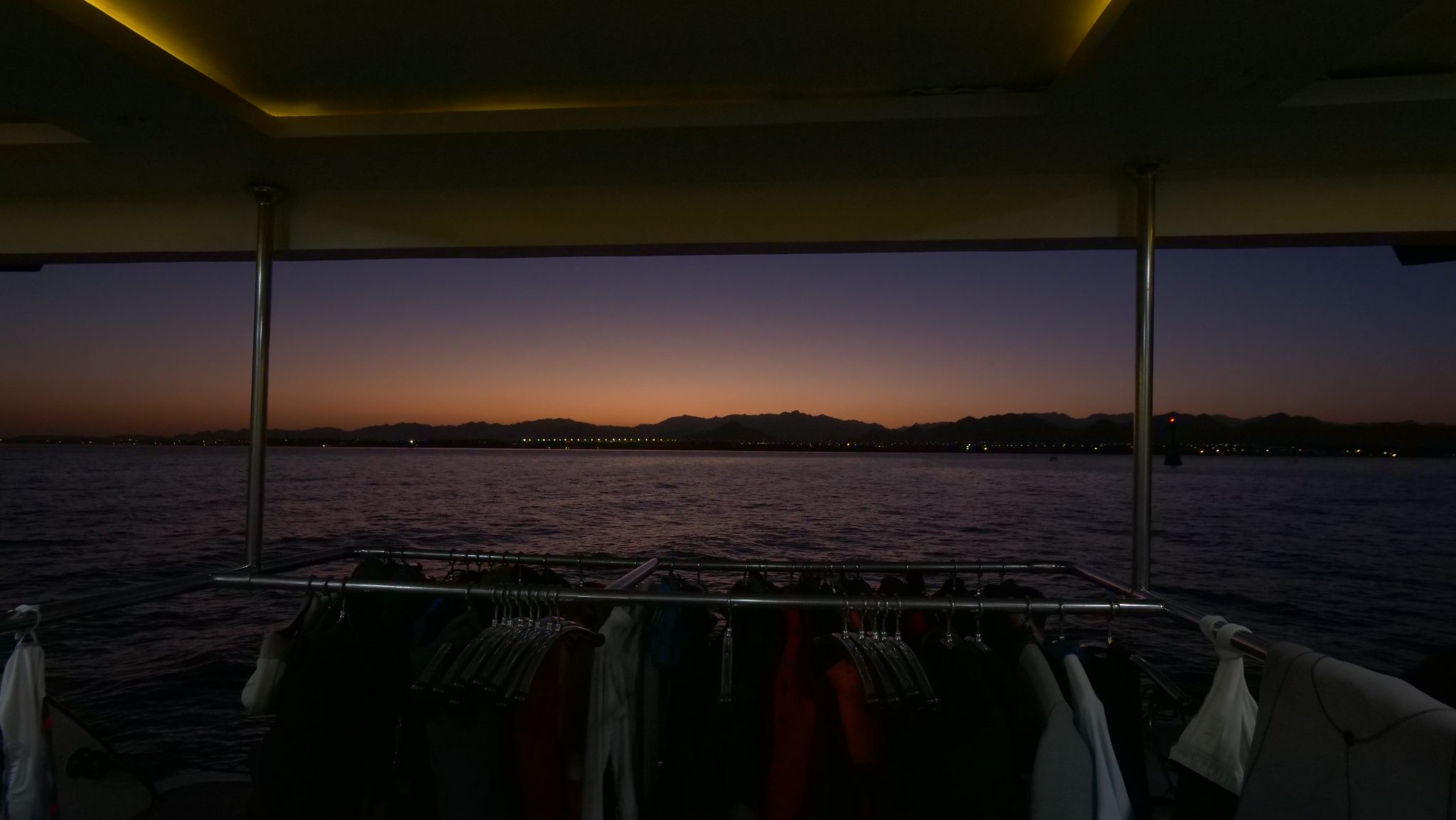
To find out more about the Northern Red Sea reef and wrecks itineraries aboard Ghazala Explorer, or to book, contact Scuba Travel now:
Email: dive@scubatravel.com
Tel: +44 (0)1483 411590
Photos: Jake Davies / Avalon.Red
-

 News3 months ago
News3 months agoHone your underwater photography skills with Alphamarine Photography at Red Sea Diving Safari in March
-

 News3 months ago
News3 months agoCapturing Critters in Lembeh Underwater Photography Workshop 2024: Event Roundup
-

 Marine Life & Conservation Blogs2 months ago
Marine Life & Conservation Blogs2 months agoCreature Feature: Swell Sharks
-

 Blogs2 months ago
Blogs2 months agoMurex Resorts: Passport to Paradise!
-

 Blogs2 months ago
Blogs2 months agoDiver Discovering Whale Skeletons Beneath Ice Judged World’s Best Underwater Photograph
-

 Gear Reviews3 months ago
Gear Reviews3 months agoGear Review: Oceanic+ Dive Housing for iPhone
-

 Marine Life & Conservation2 months ago
Marine Life & Conservation2 months agoSave the Manatee Club launches brand new webcams at Silver Springs State Park, Florida
-

 News3 months ago
News3 months agoWorld’s Best Underwater Photographers Unveil Breathtaking Images at World Shootout 2023


